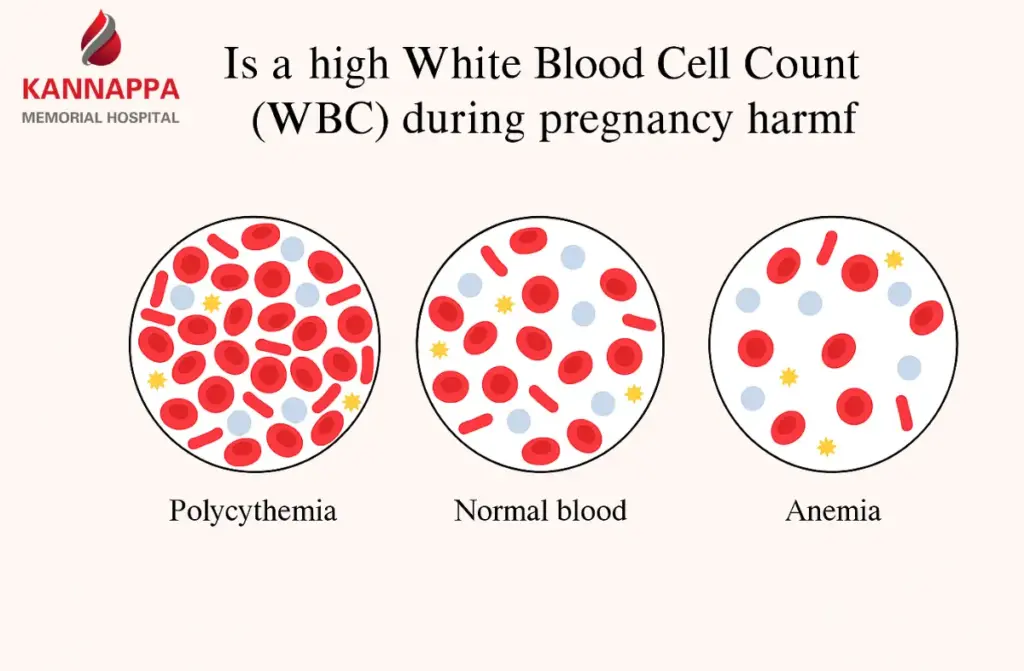A high white blood cell cunt refers to an elevated number of white blood cells (WBCs) circulating in the bloodstream cells that serve as the body’s defense army against infections, inflammation, and disease. When these counts rise above normal levels, it can signal the immune system is responding to an underlying issue, ranging from infections and stress to more serious conditions like bone marrow disorders. While a temporary increase may result from common illnesses or medications, persistent elevation often warrants further medical evaluation. Understanding the causes and implications of a high white blood ccell count is crucial for identifying potential health concerns early and ensuring appropriate care.
Types of White Blood Cell Count
White blood cells are categorized into several distinct types, each playing a vital role in defending the body against infections and maintaining immune balance. When a high white blood cell count occurs, identifying which type of cell is elevated can help determine the underlying cause or condition.
- Neutrophils: These are the most abundant white blood cells and act as the first responders to bacterial infections or inflammation. A rise in neutrophils often indicates acute infections, stress, or tissue injury, contributing significantly to a High White Blood Cell Count.
- Lymphocytes: Responsible for producing antibodies and regulating immune responses, lymphocytes increase during viral infections or certain autoimmune disorders. Persistent lymphocyte elevation may suggest chronic viral illnesses or blood-related conditions.
- Monocytes: These cells remove dead tissue and fight off chronic infections. Elevated monocytes can be seen in long-term inflammatory diseases or during recovery from acute infections, adding to the high white blood cell count profile.
- Eosinophils and Basophils: Though less common, these cells play essential roles in allergic reactions and parasitic infections. Their increase may point toward allergic disorders, asthma, or parasitic infestations, each contributing uniquely to elevated WBC levels.
High White Blood Cell Count Symptoms
Recognizing High white blood cell count symptoms is essential for identifying potential infections, inflammatory conditions, or more serious underlying disorders. While a high white blood cell count itself is detected through blood testing, several physical and systemic signs may accompany the condition, reflecting the body’s immune response.
- Fever and Fatigue: A persistent fever often indicates that the immune system is actively fighting an infection or inflammation. Fatigue accompanies this process as the body diverts energy toward producing more white blood cells and combating the underlying issue.
- Frequent Infections: Individuals may experience recurring infections such as sore throats, sinus infections, or urinary tract issues. This occurs because an elevated white blood cell count often signifies an ongoing struggle between the immune system and harmful pathogens.
- Inflammation and Swelling: Localized pain, redness, or swelling in joints or tissues can appear when the immune response becomes overactive. Such inflammatory symptoms are commonly associated with autoimmune diseases or chronic inflammatory conditions linked to a high white blood cell count.
- Unexplained Weight Loss or Night Sweats: These systemic signs can accompany prolonged immune activation or blood-related disorders. They may indicate a more serious cause behind the high white blood cell count, such as leukemia or chronic infection.
What Causes High White Blood Cell Count?
A high white blood cell count can arise from various physiological and pathological conditions that trigger the immune system or affect bone marrow function. Understanding the high white blood cell count causes helps pinpoint whether the elevation is a temporary response or a sign of a chronic or serious health issue.
- Infections: The most common cause, infections stimulate the immune system to produce more white blood cells to fight bacteria, viruses, or fungi. Acute bacterial infections like pneumonia or appendicitis often show a sharp increase, while chronic infections may cause sustained elevation.
- Inflammatory Disorders: Autoimmune conditions such as rheumatoid arthritis, lupus, or inflammatory bowel disease lead to ongoing inflammation, prompting continuous white blood cell production. This chronic immune activity keeps the WBC count persistently high.
- Stress and Physical Strain: Severe emotional stress, strenuous exercise, or physical trauma can temporarily elevate white blood cell levels. The body releases stress hormones like cortisol, which stimulate bone marrow to release more white cells into circulation.
- Allergic Reactions and Asthma: Allergies trigger eosinophils and basophils two types of white blood cells to increase as part of the body’s defense mechanism. These cells help combat allergens but can contribute to an overall high white blood cell count.
- Certain Medications: Drugs such as corticosteroids, lithium, and epinephrine can cause elevated white blood cell counts as a side effect. These medications either stimulate bone marrow production or mobilize stored white cells into the bloodstream.
- Bone Marrow Disorders and Leukemia: Serious conditions like leukemia or myeloproliferative disorders cause uncontrolled production of white blood cells. Unlike temporary elevations, these disorders lead to abnormally high counts that disrupt normal blood balance.

Why do I need a white blood count?
A white blood cell count is a simple but informative blood test used to detect infections, evaluate immune function, and investigate high white blood cell count causes.
- Diagnosis and triage: A WBC count helps distinguish bacterial from viral infections because bacterial illnesses often cause neutrophil predominance while viral infections tend to raise lymphocytes. Clinicians use these patterns to prioritize diagnostic tests and begin appropriate therapies quickly.
- Monitoring treatment and recovery: Serial WBC measurements reveal whether antibiotics, steroids, or other treatments are effective by showing trends in total count and differential cell types. For example, a falling neutrophil count with clinical improvement suggests resolving bacterial infection, whereas rising counts may prompt reassessment.
- Detecting blood and marrow disorders: Markedly elevated or persistently abnormal white cell counts can signal leukemia, myeloproliferative disorders, or marrow dysfunction, triggering further evaluation with peripheral smears and bone marrow studies. Early identification of these conditions influences prognosis and expands therapeutic choices.
- Risk assessment and safety checks: A baseline WBC count before surgery, chemotherapy, or immunosuppressive therapy uncovers hidden infection or immunosuppression and helps tailor preventive measures. Because the test is inexpensive and rapid, it serves as a practical safety screen in many clinical settings.
What happens during a white blood count?
- Sample Collection: The process begins with drawing a small blood sample, usually from a vein in the arm. The site is cleaned with an antiseptic, and a sterile needle is used to collect the sample into a test tube, ensuring accuracy and preventing contamination.
- Laboratory Analysis: Once collected, the blood sample is sent to a laboratory where automated analyzers count the total white blood cells and differentiate between types such as neutrophils, lymphocytes, monocytes, eosinophils, and basophils. This differential count helps identify whether a high white blood cell count is due to infection, allergic response, or a bone marrow disorder.
- Microscopic Examination: In some cases, a technician may review a stained blood smear under a microscope to visually inspect the shape, size, and maturity of the cells. This step is especially important when the analyzer detects abnormal patterns that could suggest diseases like leukemia or severe infection.
- Result Interpretation: The results are compared to established reference ranges based on age, sex, and health status. Deviations such as a high white blood cell count are then interpreted alongside symptoms and medical history to determine possible causes and next steps.
How to Treat High White Blood Cell Count
Understanding how to treat high white blood cell count begins with identifying the underlying cause rather than targeting the count alone. Treatment focuses on managing infections, inflammatory conditions, or bone marrow abnormalities that trigger excess white cell production.
- Treating Infections: When infections are the root cause, antibiotics, antivirals, or antifungal medications are prescribed based on the type and severity of the infection. Reducing the infectious load allows the immune system to normalize, which gradually lowers the white blood cell count to healthy levels.
- Managing Inflammatory and Autoimmune Conditions: Chronic inflammation from disorders such as rheumatoid arthritis or lupus often elevates white blood cell levels. Anti-inflammatory medications, corticosteroids, and disease-modifying antirheumatic drugs (DMARDs) are used to control inflammation, which helps stabilize WBC production.
- Addressing Allergic Reactions: When allergies or asthma contribute to elevated counts, antihistamines, corticosteroids, or immunotherapy may be recommended. These treatments reduce the overactivity of eosinophils and basophils, types of white blood cells commonly involved in allergic responses.
- Treating Bone Marrow and Blood Disorders: For conditions like leukemia or myeloproliferative syndromes, specialized treatments such as chemotherapy, targeted therapy, or bone marrow transplantation may be required. These interventions directly regulate or replace malfunctioning marrow cells responsible for excessive white cell production.
- Lifestyle and Supportive Care: Adequate rest, hydration, stress reduction, and balanced nutrition support immune function and recovery. Avoiding smoking and maintaining a healthy diet rich in antioxidants also contribute to stabilizing immune activity and preventing recurrent elevations.
Results
Interpreting the results of a white blood cell (WBC) count provides essential insights into the body’s immune activity and overall health. A high white blood cell count indicates that the body is actively responding to stress, infection, or another underlying condition, while low counts may suggest immune suppression or bone marrow issues.
Read also: Health Benefits of Donating Blood











